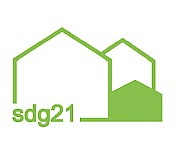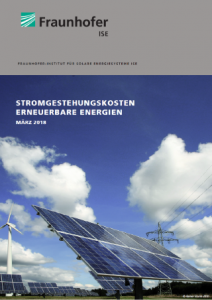 The "Alternative Economic Policy Working Group" has published its MEMORANDUM 2018 report.
The "Alternative Economic Policy Working Group" has published its MEMORANDUM 2018 report.
Price of the "black zero": distribution deficits and gaps in supply
Germany, with its senseless ideology of austerity and cuts, has not yet arrived economically in the 21st century. The small-minded hucksterism in the ruling policy is also slowing down the recovery in the European Union and the Eurozone.
The Memorandum 2018 shows urgently needed alternatives to the economically narrow-minded "zero policy". In Germany, the focus must be on strengthening domestic demand and thus on higher incomes for dependent employees and more government spending. The state share is significantly too low. In Europe, it must be about cooperation instead of blind competition. Prof. Dr. Heinz-J. Bontrup explains: "Germany's current account surpluses have been and are being generated at the expense of dependent employees and are therefore counterproductive and dangerous. Germany's chronic current account surpluses are by no means a healthy indicator of competitiveness. Rather, they are the result of domestic economic imbalances. Permanently and senselessly, much more is produced in Germany than is consumed, while important domestic economic sectors such as infrastructure, care, education and the Affordable housing on the basis of public housing are criminally neglected.
Millions of precarious jobs have led to poverty wages and later to poverty in old age. Frustrated, many citizens are turning away from established politics. National ideas that are hyper-dangerous for democracy are becoming more and more popular. Prof. Dr. Mechthild Schrooten explains: "The demand for an unconditional basic income shows how many people feel that working life has no prospects. In fact, a basic income that is resistant to poverty is not an option in purely mathematical terms.
What is urgently needed is better participation in the labour market. "Contrary to the manipulated official statistics, mass unemployment with a growing number of precarious poverty work still characterises society," says Heinz-J. Bontrup. Reducing working hours with full wage and staff compensation is therefore urgently needed and would be easily financed against the background of an overall rich Germany. Last year alone, Germany produced over 2.3 trillion euros in distributable value added. The distribution issue is the core problem in Germany. "A lot of capital in the hands of a few also means that the financial markets no longer function; risks are again accumulating more intensely here," explains Mechthild Schrooten.
Against this background, the Alternative Economic Policy Working Group is focusing on strategies that put a definitive end to the redistribution from the bottom to the top. Economic growth must reach everyone. Wages must rise, working hours must be shortened and the welfare state must be expanded instead of dismantled. To finance this, taxes must rise sharply. In the past, the much-lamented national debt was mainly caused by taxes that were too low. Therefore, the top tax rate and corporate taxes must be increased. In addition, a one-time wealth tax must be levied and the immediate reintroduction of the wealth tax must be implemented. This can then be used to finance, in addition to additional national debt, a public investment programme of at least 120 billion euros. Last but not least, and once again, the Alternative Economic Policy Working Group calls for a democratisation of the economy. The 40 million dependent employees in Germany must finally have a say in the economy, on an equal footing with capital.
Website with pdf downloads:
www.alternative-wirtschaftspolitik.de/...memorandum_2018
taz article:
http://taz.de/Alternativer-Wirtschaftsbericht/!5497450/
Keywords:
Stakeholders, DE-News, Media, New books and studies, Housing policy, Economics



